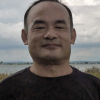Traditional Chinese Medicine (TCM) is an integral part of Chinese culture. For thousands of years, it has made great contribution to the development and prosperity of Chinese nation, and the health of the Chinese people. Perhaps it is the one of symbols that best represents Chinese culture.
In comparison with Western medicine, the Chinese medicine takes a far different approach. It is an ancient but very vital holistic system, based on the Chinese philosophy of the heaven, earth and human, and the notion of harmony and balance, employing the ideas of moderation and prevention. With a recorded history of over 2000 years, TCM has formed a deep and immense knowledge of medical theory, diagnostic methods, prescriptions and cures. Since the ancient times, especi8ally the Han and Tang Dynasties, TCM has been spread all over the world, especially, in Asia.
1. The Distinctive
Main aspects of TCM's concept of the human body, health, and disease, are essential Qi, Yin and Yang, the Five Elements, correspondence between human and the universe, the Zang-Fu organs, qi and blood, meridians and Six Exogenous Pathogenic Factors.
The Theory of Essential Qi
The theory of essential qi is an ancient Chinese philosophical system which explain the formation of the universe by an invisible substance called qi. The ceaseless movement of qi causes all kinds of changes, and the essential part of qi given rise to life.
Yin and Yang Theory
Yin and Yang Theory is an ancient Chinese philosophical concept of naive dialectics, expressing the law of the unity of opposites. In general, "Yin" is associated with cold, female energy, and represents the solid organs while "Yang" is associated with hot, male energy, and represents the hollow organs. Chronic illness is seen as Yin, while acute illness is seen as Yang. Originally, the "Yin" was the shady side of the slope, and the "Yang" was the sunny side of a slope. The two terms are used to describe any item in nature. In Chinese medicine, all organisms have both Yin and Yang qualities and a balance of the two is necessary for good health.
Five Element Theory
Like the concept of yin and yang, the Five Elements Theory is fundamental to Chinese culture. The five element theory is one of the major systems of thought within traditional Chinese medicine consisting of five elements including wood, fire, earth, metal, and water. The theory of five elements is used to interpret the relationship between the physiology and pathology of the human body and the natural environment. According to the theory, the five elements are in constant move and change, and the interdependence and mutual restraint of the five elements explain the complex connection between material objects as well as the unity between the human body and the natural world. Essentially, Five Element theory is used to help explain the cause of particular diseases, and to associate signs or symptoms to particular organs and afflictions.
Correspondence between Human and the Universe
The Chinese believe that human, heaven and earth are a trinity. The correspondence between human and the universe is one of the basic theories in traditional Chinese medicine, according to which the physical structure and physiological phenomena of the human body as well as the pathological changes are in adaptive of conformity with the variations of the natural environment, and hence in diagnosis and treatment the impacts of environmental factors such as climatic conditions, geographical localities, should be considered.
2. Four Methods of Diagnosis

It is a wonder that Chinese doctors could cure countless patients without any assistant apparatus but only a physical examination. The four methods of diagnosis consist of observation, auscultation and olfaction, interrogation, pulse taking and palpation.
Observation indicates that doctors directly watch the outward appearance to know a patient's condition. As the exterior and interior corresponds immediately, when the inner organs run wrongly, it will be reflected through skin pallor, tongue, the facial sensory organs and some excrement.
Auscultation and olfaction is a way for doctors to collect messages through hearing the sound and smelling the odor. This is another reference for diagnosis.
Interrogation suggests that doctors question the patient and his relatives, so as to know the symptoms, evolution of the disease and previous treatments.
The taking of the pulse and palpation refer that doctors have made the pulse condition of patients on the radial artery a focus of attention, and then to know the inner change of symptom. Doctors believe that when the organic function is normal, the pulse frequency and intensity will be relatively stable, and when not, variant.
3. TCM Therapy
When treating a disease, doctors of traditional Chinese medicine usually find the patient's condition through these four diagnostic methods: observation, auscultation and olfaction, interrogation, pulse, and palpation. Combining the collected facts and according to their internal relations, doctors will utilize the dialectics to analyze the source and virtue of the disease. Then make sure what prescription should be given. In traditional Chinese medicine, the drugs are also different from the West, because doctors have discovered the medicinal effects of thousand of herbs over a long period of time and developed hundreds of prescriptions. Before taking the medicine, the patient will have to boil and extract those herbs the doctor prescribed. Then there is the distinctive method of preparation, associated with the acupuncture and massage, the treatment will take effect magically.
TCM therapy largely consists of Chinese herbal medicine, acupuncture, dietary therapy, and tui na massage. The health promoting aspects of qigong and taiji are also closely associated with it.
Such a complicated medical approach had come down thanks to records like the Yellow Emperor's Canon of Interior Medicine, Shen Nong's Canon of Herbs, Nan Jing (Difficult Classic or Classic of Medical Problems), Shang Han Za Bing Lun (Treatise on Cold-induced and Miscellaneous Diseases), and the Compendium of Materia Medica, which are all comprehensive and profound works.




